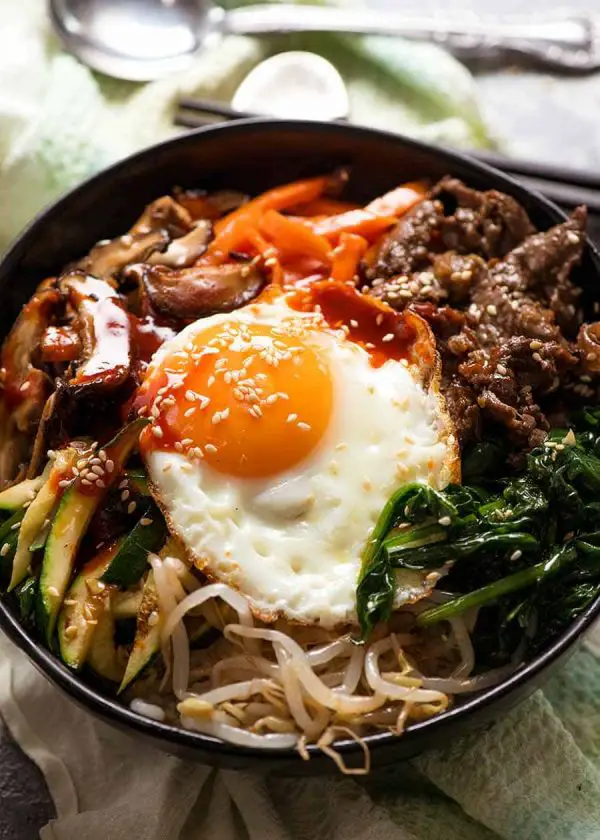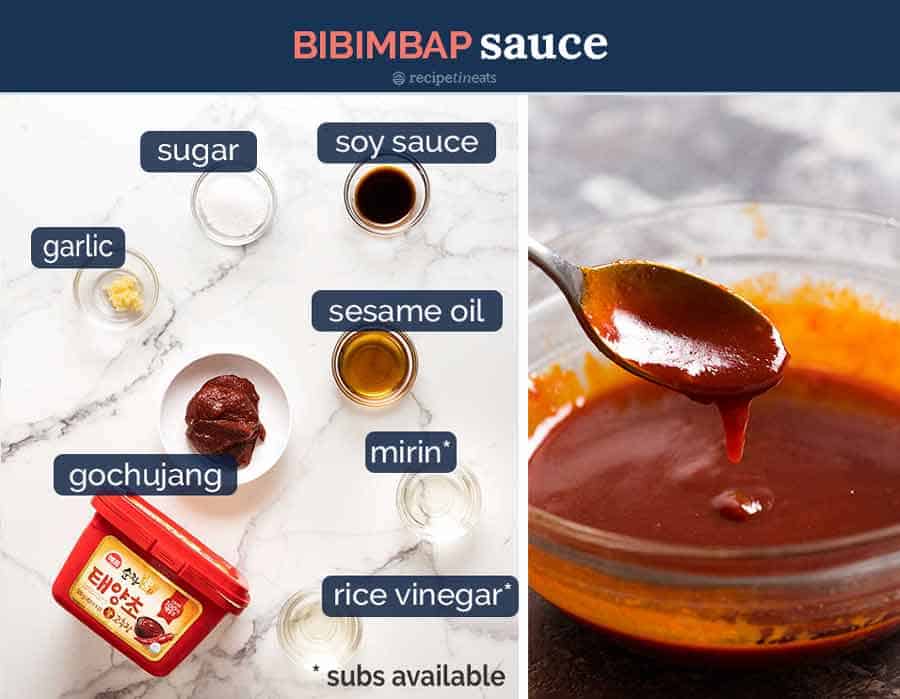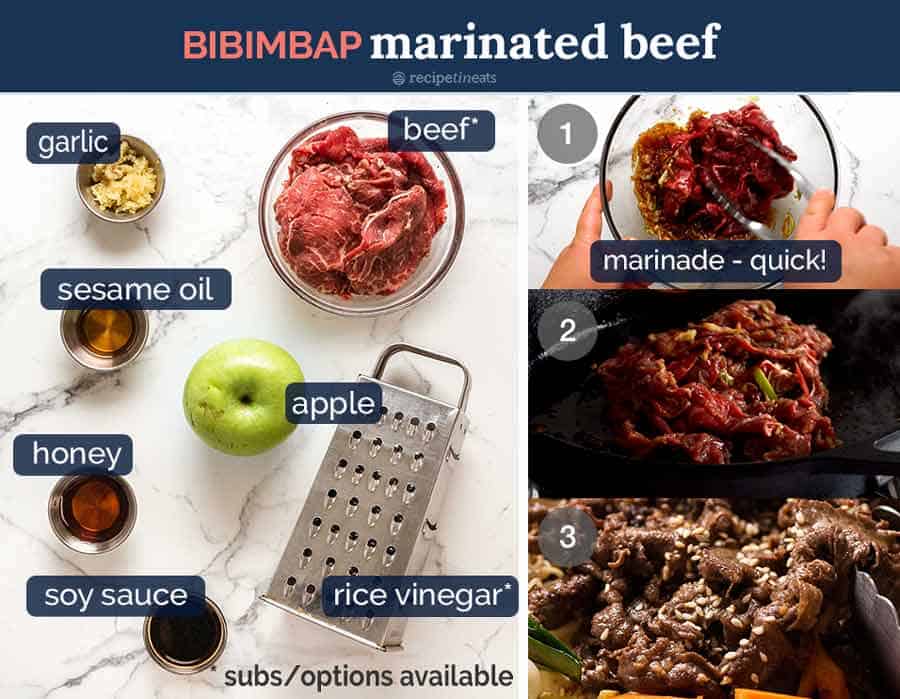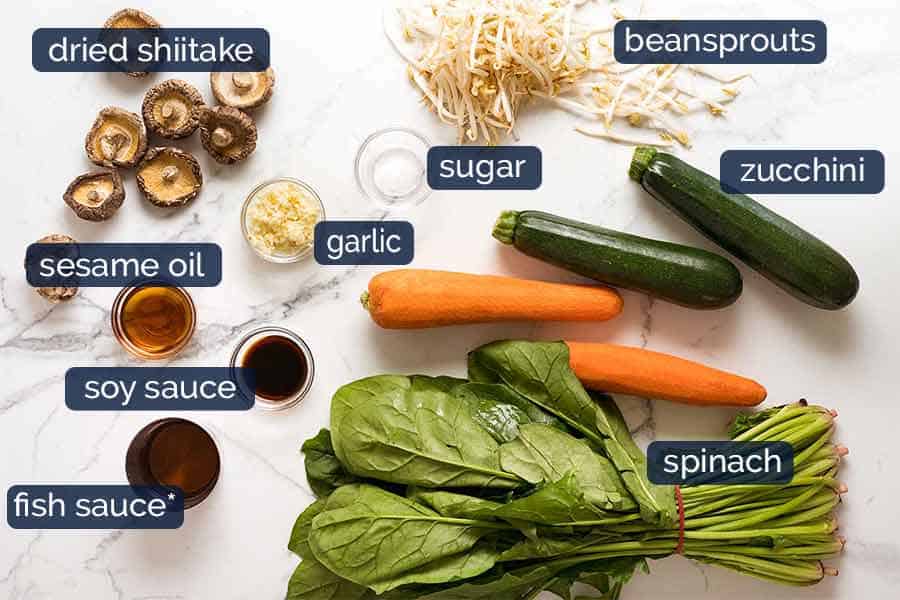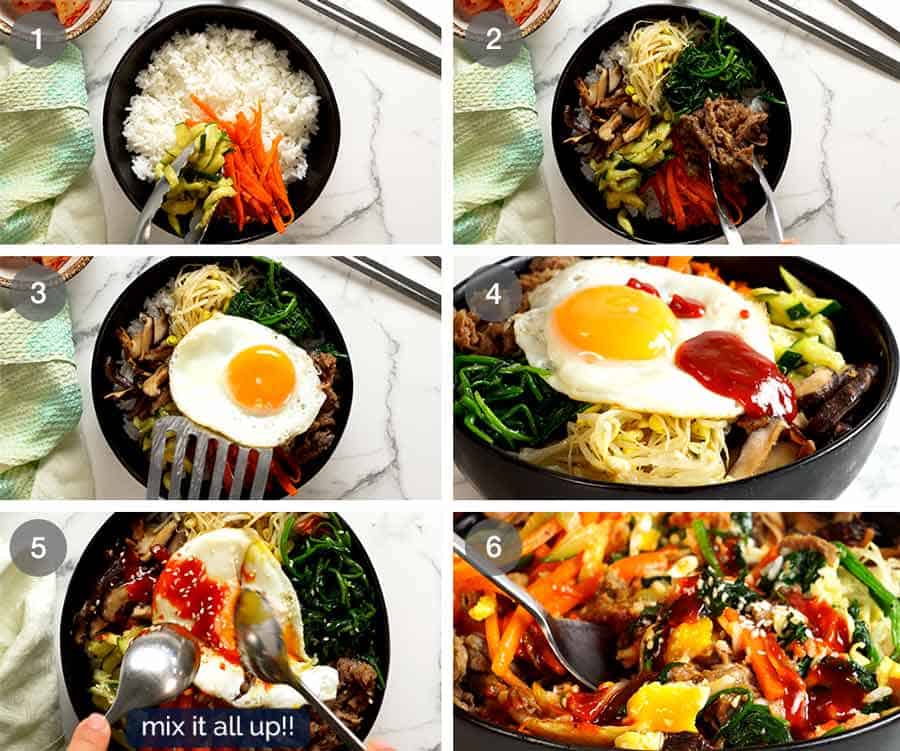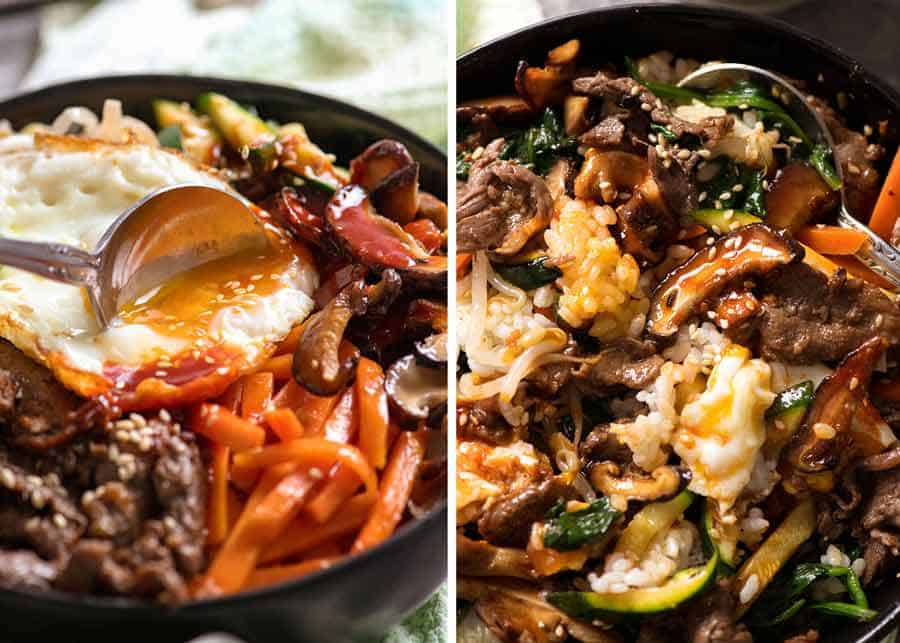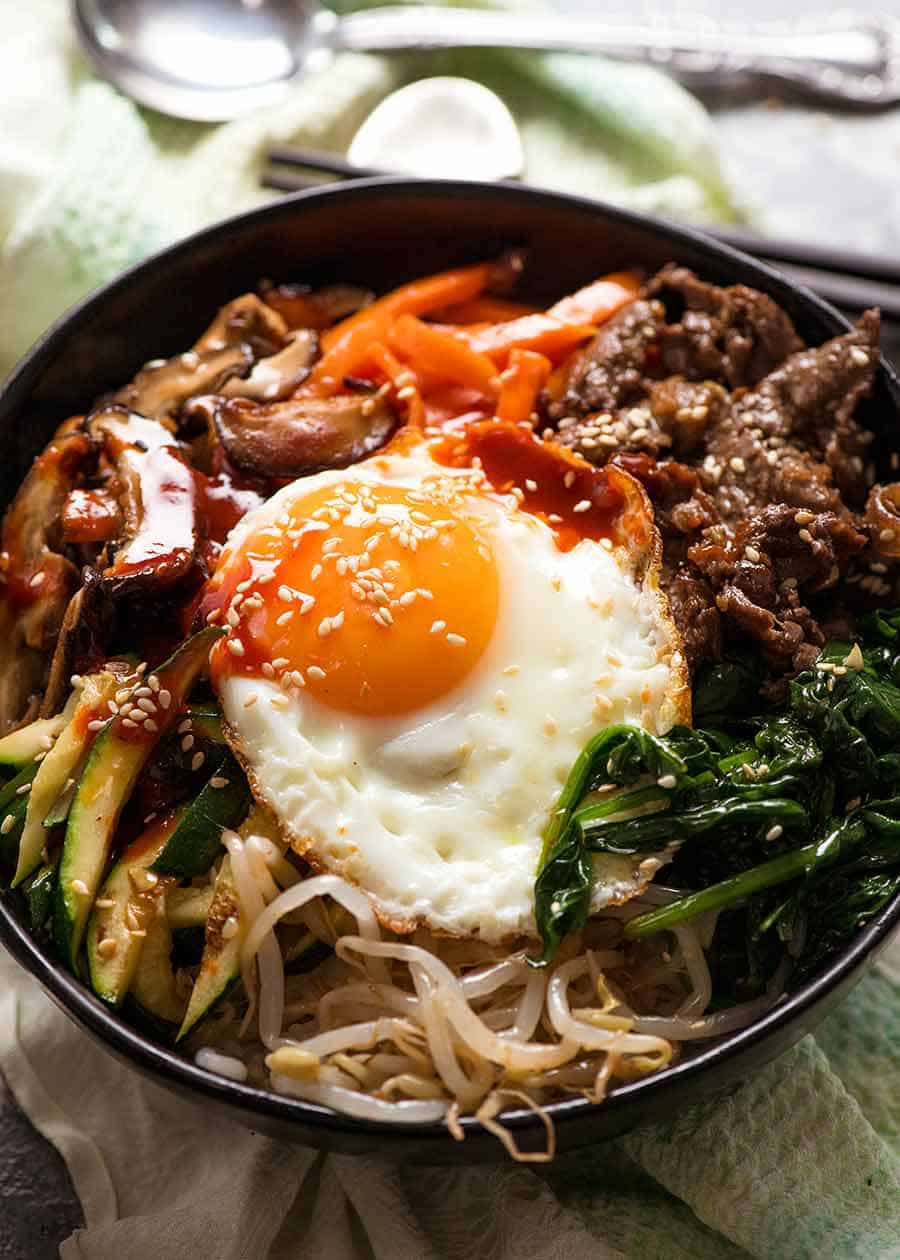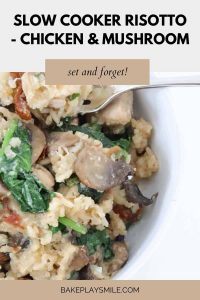This post Bibimbap This post Bibimbap! (Korean Rice Bowl), was last updated on 2022.
Bibimbap – Trust the Koreans to transform the humble rice bowl into a recipe that’s revered all around the world! With a kaleidoscope of seasoned sautéed vegetables, Korean marinated beef, and the signature fried egg, the thing that really seals the deal is the bright red, spicy Bibimbap Sauce that I can’t get enough of.
Combine it all into one delicious mixture and then enjoy!
Bibimbap
I’m a bit obsessed with Bibimbap. I’d go as far as to say that it’s my favourite Korean food – but it always concerns me when I make grand statements like that because I’m worried I’ve said that about another Korean recipe I’ve previously shared.
No one’s ever accused me of being unenthusiastic, that’s for sure! 😂
What’s bibimbap?
Bibimbap is a Korean dish that is well-known. A rice bowl topped with all sorts of seasoned sautéed vegetables, marinated meat (usually beef), a fried egg sunny side up, finished with a sprinkle of sesame and generous dollop of a sweet-spicy-savoury Bibimbap sauce. <- Heads up, This sauce is amazing! You can use it with any vegetable and any meat, and your Bibimbap will be delicious!
Lengthy – but repetitive!
There’s no denying it – this recipe has more components to it than my quick ‘n easy one pot meals because all the toppings are seasoned and cooked separately.
However, the basic seasonings can be repeated and you can easily start and stop at your leisure. it’s MEANT to be served at room temp!
I’m going to walk through each of the components here, but if you’re feeling impatient, just You can skip to the recipe
Bibimbap Sauce
It’s probably not “normal” to start with the Bibimbap Sauce, but I am because I think it makes this dish. You can use any vegetables and any protein (even tofu) and your bibimbap will still be SO GOOD once it’s all mixed up with the rice and this sauce!
The essential ingredient in Bibimbap Sauce is Gochujang, an intense flavoured spicy miso paste that’s key to Korean cooking. Find it at Asian grocery stores (it’s cheap, ~$2.50, and lasts for ages), at some Woolworths stores (Australia), and here it is on Amazon Australia, US, Canada and UK.
Skip to the recipe
Marinated Beef
Nowadays, you’ll find Bibimbap with all sorts of meat toppings but the traditional version is made with thinly sliced beef. Bulgogi (Korean Marinated Beef), is often used to season beef. We don’t need big flavour on the beef because the Bibimbap Sauce adds tons of flavour. Some recipes even use just basic soy-garlic-sesame oil combination.
But I want each ingredient in my Bibimbap tasty enough to eat as a whole, so I use a modified Bulgogi marinade.
Bulgogi’s unique ingredient is the grated apple – this is a signature technique used in Korean marinades to add flavour, sweetness and tenderise! Nashi pear can also be used.
What about other meats?
Totally! You can slice or chop chicken, turkey, or pork into small strips, prawns/shrimp, or fish fillets.
Skip to the recipe
Bibimbap Vegetables
This is the part that some people find tedious but I don’t find to be a big deal at all – cooking each of the vegetables individually.
Here’s how it goes down:
-
Shiitake mushrooms – soak in boiling water, then slice and sauté with garlic, soy and sugar. Although fresh is fine, dried products have a stronger flavour.
-
Zucchini, carrot – cut into batons, optional to sprinkle with salt then leave for 20 minutes (I often skip this), then sauté until soft.
-
Spinach – chop then sauté, super quick!
-
Beansprouts – Steam or boil the mixture until it is tender. Once the liquid has drained, season it with garlic, sesame oil, fish sauce, soy sauce, and/or soy sauce.
Simple, right?? Get two pans going if you’re impatient!
Skip to the recipe
Other vegetables
So. Many. Options! Here are some options to replace vegetables I use.
-
Dry shiitake – sub with any fresh mushrooms
-
Carrot and zucchini – sub with asparagus, green beans, broccolini (halve lenthgwise), snow peas (slice, peppers/capsicum
-
Spinach and bean sprouts – kale, silverbeet, cabbage (sliced), leafy Asian greens
Assembling Bibimbap
This is my favorite part! (Aside from eating it of course… and breaking the yolk… and mixing it all up… OK fine. It’s my 4th favourite part!)
There are no rules regarding the order of the vegetables and meats placed on the rice. But, you can use alternate colours to make it look just as delicious as it tastes. 😇
Skip to the recipe
How to eat Bibimbap
The beauty of Bibimbap is the way the bowl arrives to you looking like a picture. Next, you can drizzle on as much Bibimbap sauce as you wish (I use approximately 2 tbsp). Finally, after all the hard work preparing the bowls you can mix everything up and make it into a delicious mess.
That first mouthful… I try to get a bit of everything, including a bit of runny yolk.
Then after that, I don’t care – I just get stuck into it. 😂
I was about to sign off. But I wanted to leave you with a more neat photo of Bimbimbap. 😂
– Nagi x
PS If the photos haven’t convince you, the video surely will!↓↓↓
You can see how it is done.
Do you want more?Follow me on Facebook, Pinterest, and Instagram to get the most recent updates. Subscribe to my newsletter
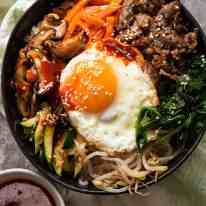
Bibimbap
Ingredients
- 4 Cups White rice cooked Ideally, you should use short grains (Note 1)
- 4 eggs
- 2 tsp sesame seeds
Korean Beef & Marinade:
- 250 g/8oz Steak tenderloin, or thick steak – Very finely sliced. (Subs, Note 2)
- 1/4 green apple Using a box grater (Note 3), grate.
- 3 Garlic cloves , minced
- 1 tbsp soy sauce Note 4: Light, all-purpose or a combination of both (Note 4).
- 1 tbsp Honey (or brown sugar).
- 2 tsp Sesame oil , toasted (Note 9)
Vegetables:
- 2 Carrots , large, cut into 5 x 0.5cm/2 x 1/5″ batons
- 2 zucchini , large, cut into 5 x 0.5cm/2 x 1/5″ batons
- 1 A bunch of spinach , cut into 5cm/2″ lengths
- 8 Dry shiitake mushrooms , large (Note 5-)
- 4 Cups Bean sprouts
- 2 tsp Garlic 3 cloves minced
- 8 tsp Vegetable oil Separated
- 1/2 tsp Salt
- 1.5 tsp soy sauce Whether it’s for light, all-purpose or just one purpose (Note 4).
- 1/4 tsp fish sauce (sub soy)
- 1/4 tsp White sugar
- Sesame oil , toasted (Note 9)
Bibimbap Sauce:
- 4 tbsp gochujang paste (Note 6)
- 2 tbsp mirin (Note 7)
- 2 tbsp rice vinegar (Note 8)
- 1.5 tsp soy sauce (Note 4)
- 3 tsp white sugar
- 1 Garlic clove Finely grated
- 2.5 tsp Sesame oil , toasted (Note 9)
Instructions
Bibimbap Sauce:
-
Mix all ingredients until sugar dissolves
Marinated Beef
-
Combine the marinade and beef in a bowl. Marinate the beef for between 30 and 48 hours.
-
Over high heat, heat 2 Tbsp oil in large skillet. Allow excess marinade to drip off before adding the beef. Let the beef cook for about 3-4 minutes, until it is cooked through and has some caramelized bits. Then remove from skillet.
-
Keep warm until needed or heat to warm.
Prepare Vegetables
-
Shiitake: Boil mushrooms for 30 minutes in boiling water. Drain and squeeze out any excess water before slicing.
-
Salting Carrots and ZucchiniOptional, Note 10: Toss the carrot and zucchini together in a separate bowl. Sprinkle 1/4 teaspoon salt on each. Let sit for 20 minutes, then drain any liquid.
Cook Vegetables:
-
If you have 2 skillets, get them going!
-
Shiitake: In a large skillet, heat 2 tablespoons oil oil on medium heat. Cook mushrooms for two minutes. Mix 1.5 tsp Soy Sauce, 1/4 tsp Sugar, and 1/2 tsp Garlic. Mix for 1 minute and then take it out.
-
Carrot: Cook the carrot in 2 tablespoons of oil until tender (5-7 to 8 minutes), then turn off heat.
-
Zucchini: Cook the carrot in the same way for four minutes
-
Spinach: Heat 2 tablespoons vegetable with a little sesame oil. Sautee until vegetables begin to wilt. Mix in 1/2 teaspoon garlic. Season with salt. Stir and then take out. Let cool and squeeze out any excess liquid.
-
Beansprouts: Let the mixture simmer for 5 minutes in boiling water or steam it in the microwave for 3 to 4 minutes, until it becomes soft. Let cool in cold water before draining. Place in a bowl and squeeze out the excess liquid. Combine with 1/4 teaspoon fish sauce, 1 tsp garlic and 2 tsp sesame oils.
-
Even though vegetables can be cooled, they should still be warm or at room temperature.
Assemble:
-
Fry eggs in a skillet to suit your taste. I prefer my eggs with runny yolks.
-
Serve warm rice in bowls
-
Add vegetables, beef, and, lastly, the eggs.
-
Sprinkle with sesame seeds and drizzle with sesame oil. Serve with Bibimbap Sauce
Notes for Recipes
2. Beef – You can find finely sliced beef in Asian supermarkets’ freezer sections. To do it yourself (which I did for the video & photos), use any tender cut of beef suitable for quick cooking (I used tenderloin). The “Asian” method is to slice very thinly.Freeze for between 30 and 60 minutes, until firm but not rock-hard. Then slice as thinly as you can.
3. AppleUse grated apple and nashipears to make a traditional Korean marinade. It adds flavour, sweetness, and tenderizes the meat.
4. Soy sauceUse light or all-purpose soy. Avoid soy that is labeled as sweet or dark soy.
5. Shiitake MushroomsDried mushrooms can be found in bigger supermarkets in Australia but are much cheaper in Asian shops! Use 8 large mushrooms or 12 small mushrooms.
Sub-fresh shiitake, but dried has a more intense flavour.
6. GochujangThis spicy red miso is rich in umami. Key Korean cooking ingredient. Find it at Asian grocery stores (it’s cheap, ~$2.50, and lasts for ages), at some Woolworths stores (Australia), and here it is on Amazon Australia, US, Canada and UK.
7. Mirin– A sweet Japanese wine that can also be used in Korean cuisine. Available at Asian grocery stores as well as large supermarkets (Coles Woolies, Aldi Aus).
8. Rice Vinegar– Can be purchased at Asian grocery shops and large supermarkets (Coles Woolies Aldi in Aus), or sub with apple cider, white wine vinegar.
9. Sesame OilToasty sesame oil gives a stronger flavor. Toasted is brown liquid; untoasted is yellow (not very common in Australia).
10. Optional salting zucchini & carrotThis seasons the vegetable all the way. I often skip this and just add the salt when sautéing.
11. StorageThis recipe is a fantastic way to meal prep. It can be kept for up to five days. This bento box is also great because it can be stored at room temperature. The beef can be frozen immediately after being marinated.
12. Refer to these recipes – So that I can share the best parts of traditional ethnic food, and make adjustments to my own taste buds, I tend to do a lot of research on them before sharing my results. References include online Korean cooking experts such as Maangchi, My Korean Kitchen (Aussie Korean food blog!), Korean Bapsang and Beyond Kimchee as well as a bunch of Korean cookbooks (some browsed at the library, some at the bookshop and some I own!).
13. Nutrition Each serving includes 1 cup cooked rice
Nutrition Information:
Korean cuisine: The spicy side to life
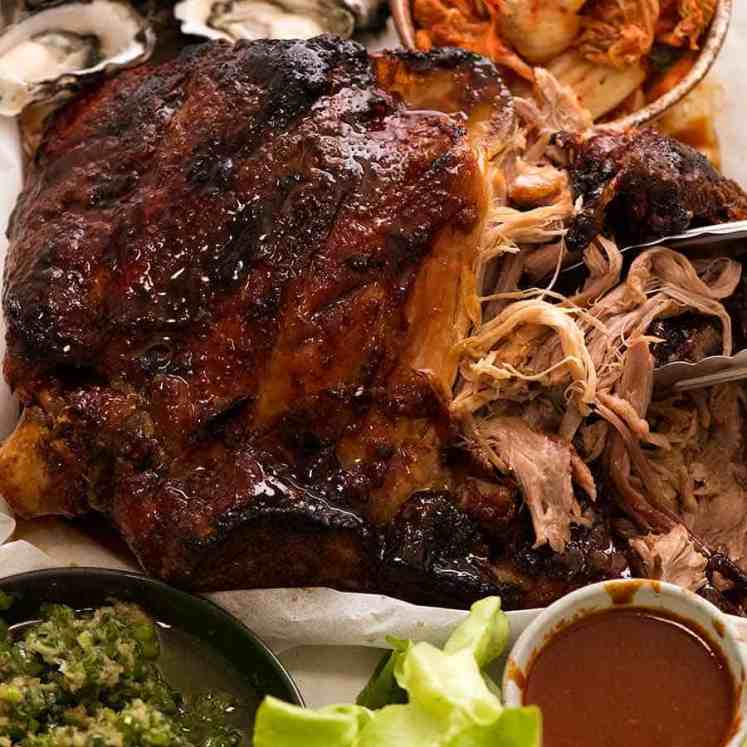
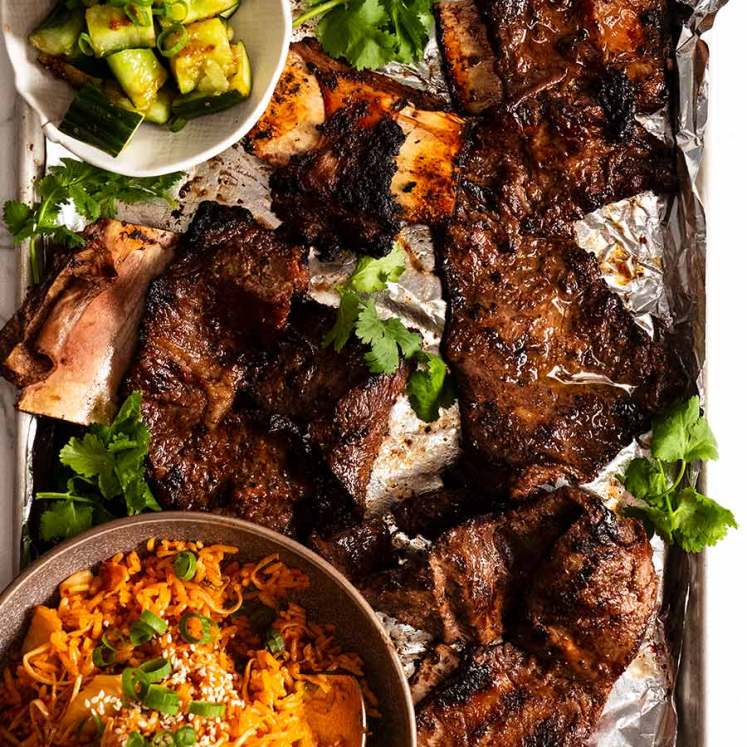
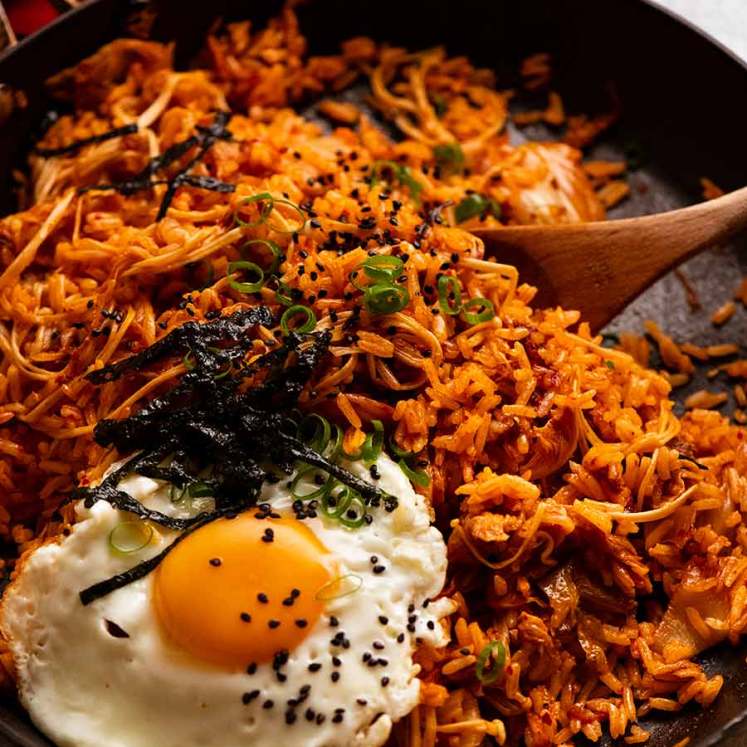
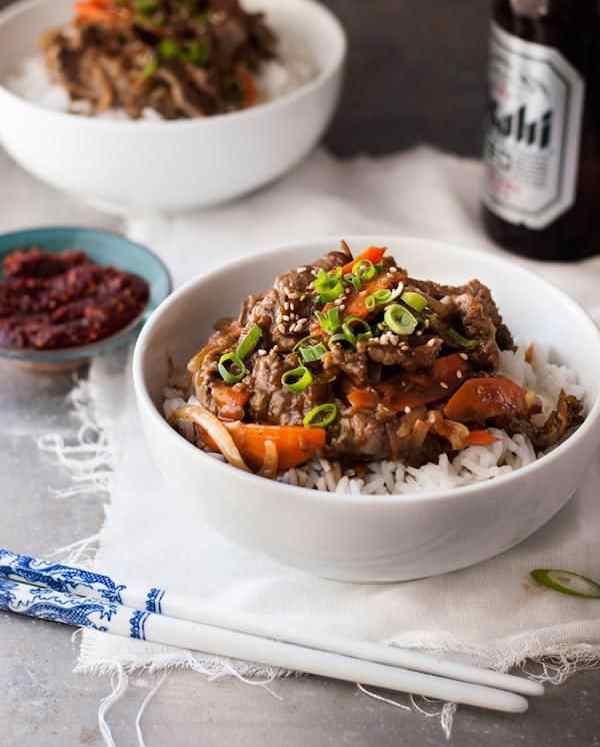
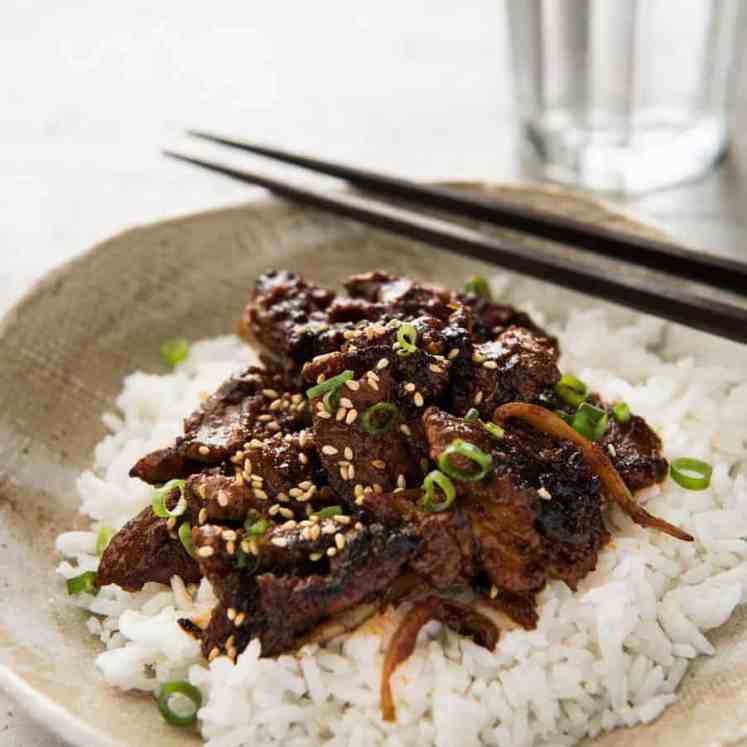
Dozer life
Yes Dozer. I am absolutely going to play tug of war with you, with that furry toy that’s soaked with your slobber.
(Not! 😂)







